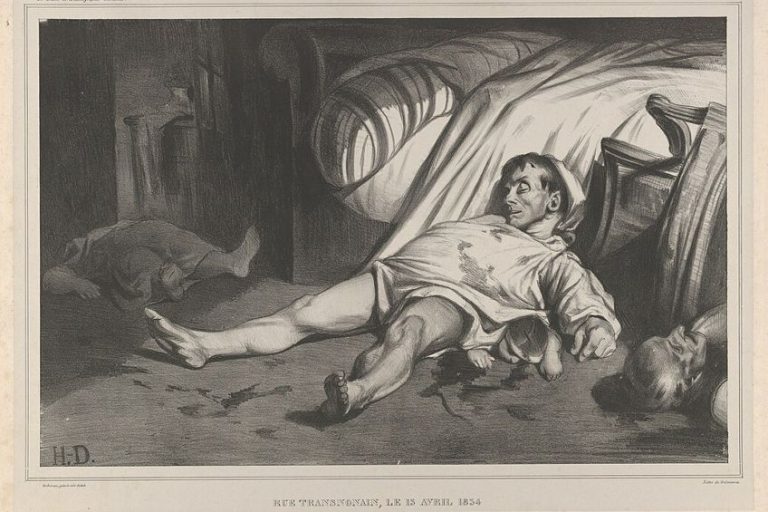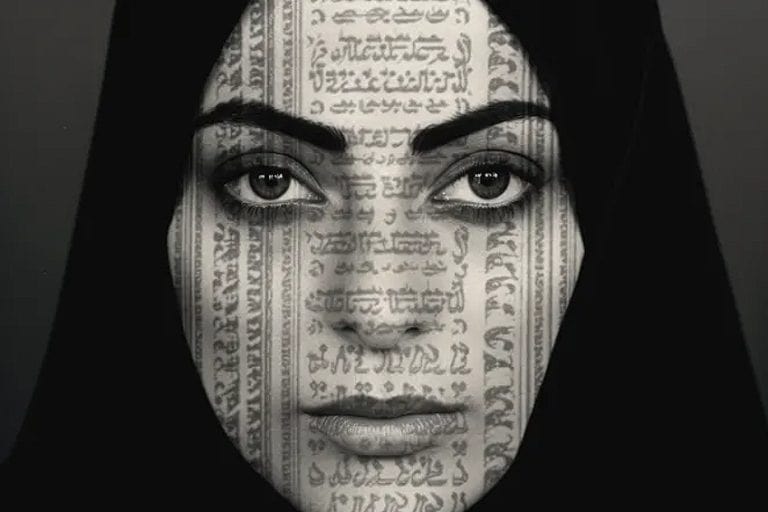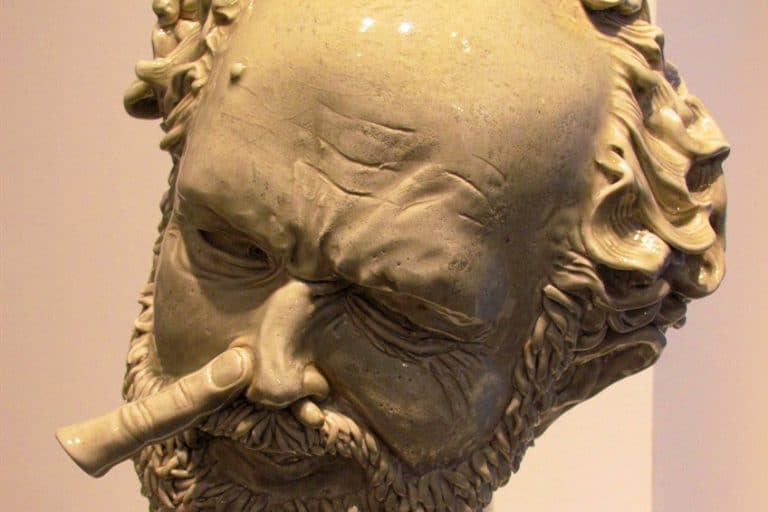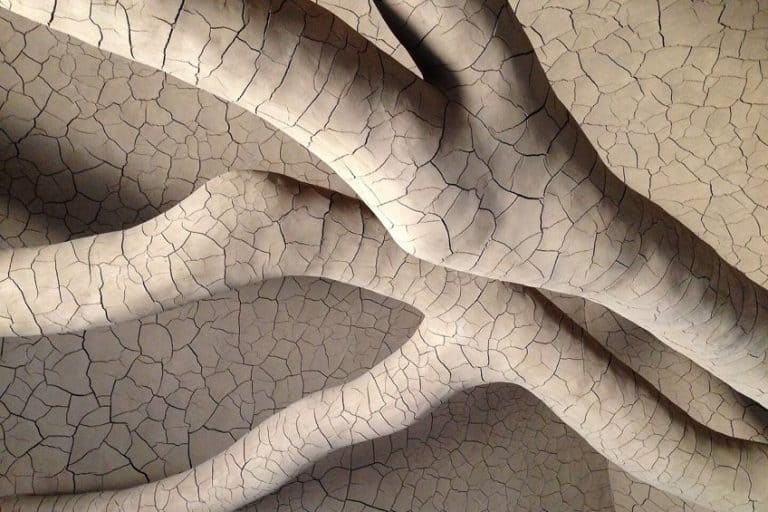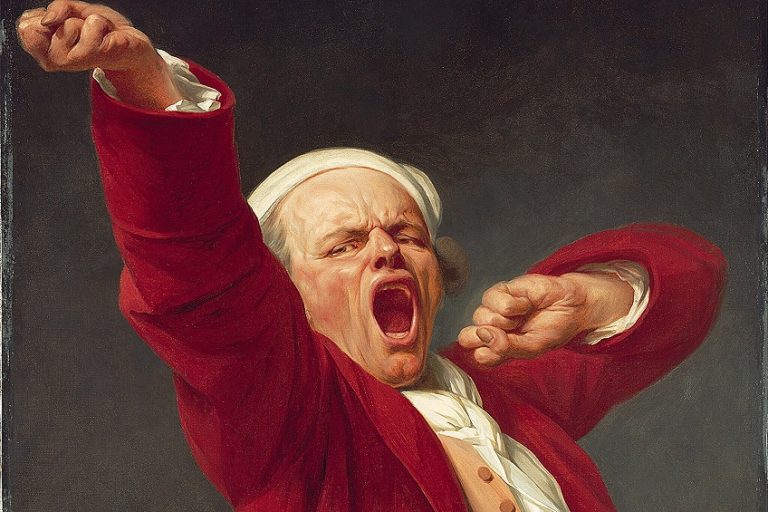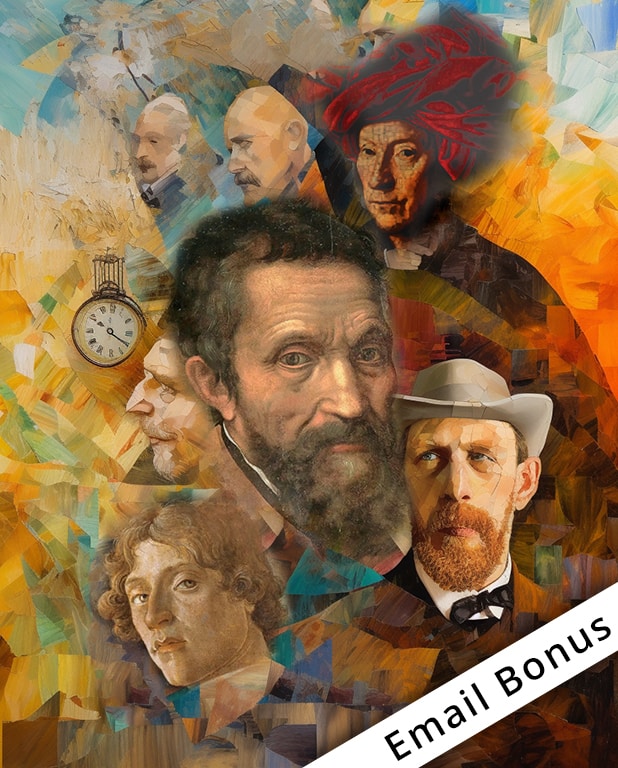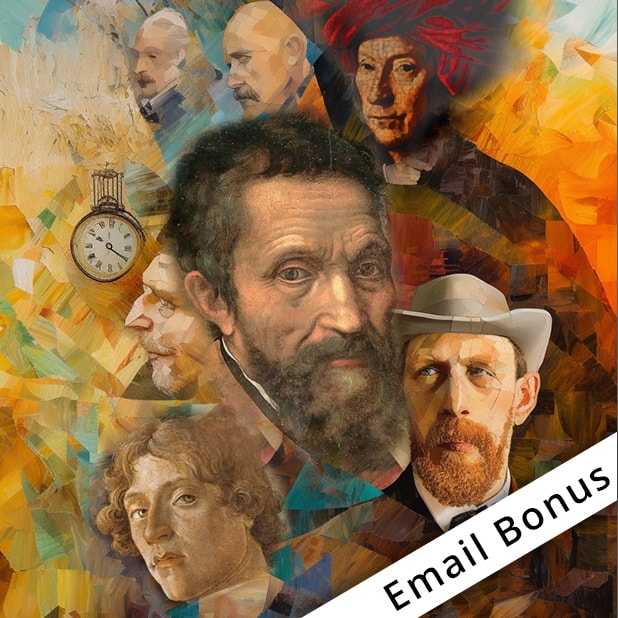Gustave Doré – French Artist Gustave Doré’s Biography and Works
Born in 1832, French artist, illustrator, and sculptor Paul Gustave Doré was a master of wood-engraving and most famous for his illustrations in classic literature. Receiving international recognition as a prominent illustrator, the artist produced over 10,000 illustrations throughout his lifetime. This article will take you through the life and history of Gustave Doré as one of art history’s greatest French illustrators.
Gustave Doré: Biography
| Date of Birth | 6 January 1832 |
| Date of Death | 23 January 1883 |
| Country of Birth | Strasbourg, France |
| Full Name | Paul Gustave Louis Christophe Doré |
| Genre / Style | Religious painting, landscapes, book illustration, caricature art, comics, genre scenes, mythology |
| Mediums Used | Drawing, sculpture, illustration, printmaking, wood-engraving |
Born in the East of France in Strasbourg on January 6th of 1832, the young Gustave Doré was already receiving attention from his peers and family by the age of five. As a child prodigy, Doré experimented with drawings, many of which were claimed to be beyond the scope of a five-year-old boy. As the young Doré approached his teenage years, he started using stone carving as his preferred medium, and soon thereafter, the talented Doré scored a job as a caricature artist at Le journal pour rire, which was a French newspaper.
At the time, one of Doré’s greatest influences was Jean Ignace Isidore Gerard, another popular caricature artist who published his illustrations under the name, J. J. Grandville.

The skilled Gustave Doré relied heavily on wood-engraving and towards the mid-1800s, the artist produced multiple comics such as Les Travaux d’Hercule in 1847 and L’Histoire de la Sainte Russie in 1854. The artist also began receiving numerous commissions and requests for book scenes and eventually received a request to make an illustration for the esteemed English poet, Lord Byron in 1853.
Among the many literary geniuses that Doré provided services to were Dante Alighieri, Miguel de Cervantes Saavedra, and John Milton. In addition to collaborating with these incredible literary contributors, Doré’s work was also featured in the book series, Gargantua et Pantagruel (c. 1532-1564), written by François Rabelais.
Alongside his increasing portfolio of success, Doré was also responsible for the production of illustrations for the new Bible and for a poem written by Pierre-Jean de Béranger that was based on an 1845 novel by Eugène Sue.
The works of Gustave Doré extended their reach and served as a key inspirational figure for many film directors and artists. The illustrator’s rise to fame was catapulted by his contribution to the French version of the Spanish novel, Don Quixote (1605), by Miguel de Cervantes Saavedra. You may also be familiar with literary critic and American poet, Edgar Allan Poe. Gustave Doré was also paid handsomely for his illustration of The Raven by Poe in 1883.
Doré achieved immense fame for his Biblical illustrations of 1866, which was followed by his first large exhibition in 1867 in London. Gustave Doré did not attend a formal academy for artistic training but he did create a few paintings that received a great deal of attention.
Most of his paintings dealt with subject matter typical of the time and included religious paintings, mythological themes, landscapes, and genre paintings.
Doré opened up his own gallery called Doré Gallery now located on Bond Street in London, where he also had an encounter with Blanchard Jerrold who collaborated with Doré on a large-scale London portrait. This collaboration is what bolstered Doré’s reputation as a skilled artist with a talent for individual vision through his engravings and woodcut illustrations. The work was eventually finalized in 1872 and published under the title, London: A Pilgrimage.
Doré produced a total of 180 wood engravings for the book, which was a public hit that excelled commercially. The book did, however, receive negative criticism by a few local critics for the nature of the illustrations as “inventive” over “copying”. Other extreme comments included criticism of the artist’s sketches, described by the Westminster Review as “commonest” and a display of the “vulgarest external features set down”.
Financially, Doré hit the jackpot on the book and received additional requests from multiple local publishers.
Most Famous Featured Works
The works of Gustave Doré appear across multiple famous pieces of literature by well-known poets and writers. Below is a list of published illustrations and collaborations that feature the works of Gustave Doré:
- Don Quixote (1605-1615) by Miguel de Cervantes
- Paradise Lost (1667) by John Milton
- Fables de la Fontaine (1668-1694) by Jean de La Fontaine
- Histoires ou contes du temps passé (1697) by Charles Perrault
- Rime of the Ancient Mariner (1798) by Samuel Taylor Coleridge
- Contes Drolatiques (1832-1837) by Honoré de Balzac
- The Raven and Other Tales (1845) by Edgar Allan Poe
- Oeuvres de Rabelais (1854) by François Rabelais
- Inferno (1861) by Dante Alighieri
- Bible (1866)
- History of the Crusades (1877) by Francois Michaud
- Lancelot and Elaine Tennyson’s Elaine (1905) by Alfred Lord Tennyson

Gustave Doré Artworks
As mentioned at the beginning of the article, Gustave Doré was a master of multiple mediums. Aside from his predominant practice in illustration (which he was best at), he also made a variety of paintings depicting ethereal scenery, mythological creatures, landscapes, and significant events.
Below, we have listed a selection of notable Gustave Doré art pieces that draw attention to the artist’s skill across medium and subject matter.
Gustave Doré: The Crusades
Among the many spectacular works produced by Gustave Doré is his contribution to Francois Michaud’s classic book, History of the Crusades, which was published in 1877 and documented the chaotic era in history that marked the war between Europe and Asia. For this project, Doré produced approximately 100 plates illustrating the brutality, nobility, and chaos that took place over centuries. Some of the scenes depicted by Doré include The Road to Jerusalem, The Discovery of the True Cross, and The Massacre of Antioch.

The Road to Jerusalem (c. 1877) by Gustave Doré
| Date | c. 1877 |
| Medium | Etching; print |
| Dimensions (cm) | 48 x 60 |
| Referenced | History of the Crusades (1877) by Francois Michaud |
Each illustration is brilliant in its technical execution and holds true to the scenes at play from 1096 until 1291. Also known as the “Crusades”, this historical event lasted for centuries and entailed a religious war that ensued in 1095 in the South of France. During this time, the Pope issued a statement, commanding Christians in the West to partner with the Byzantines and go to war in an effort to recapture land that was under Islamic control. This was the first statement that caused the beginning of a series of blood-thirsty citizens and militants to engage in a pilgrimage of bloodshed.
Many people who joined the Crusades wore the symbol of the cross, which served as religious ammunition to motivate their actions.

The Road to Jerusalem as illustrated by Gustave Doré was an illustration that spoke to one of the first Crusades that resulted in the fall of Jerusalem. The Crusaders and members of the Byzantine Empire were losing favor with each other at this time but continued to collaborate on the capture of the city of Antioch in Syria, well into 1098. Following this pitstop, the Crusade took to Jerusalem and ended up slaughtering hordes of women and children in 1099 upon entrance to the city.
A truly horrific event, among several, that could not have been illustrated better by Gustave Doré.
In Godfrey enters Jerusalem (1877), the gruesome scene can be seen depicted through the contrast of the darker lines with the rubble and destruction that ensues, an accurate depiction of the Crusader’s entry into Jerusalem.

Doré and Drawing
Drawing was the artist’s first medium of choice since the young age of five. Over time, Doré developed his skill significantly and alongside painting, illustration, sculpture, and printmaking, Doré was able to produce Le Christ sortant du tombeau (c. 1850-1883).
| Date | c. 1850-1883 |
| Medium | Gouache, brown ink, and black chalk on brown paper |
| Dimensions (cm) | 51.3 x 87.1 |
| Credit | Dodge Fund, 1960 |
The drawing was executed in brown ink and gouache over a layer of black chalk to depict the biblical image of Christ coming out of the tomb. Christ is seen highlighted as the main subject through Doré’s use of white chalk to draw a distinction between the heavenly being and the guards in the background.
Doré’s expert use of chalk, a simple drawing medium, to depict such an important religious event is incredible. It is almost as if Doré was present himself to witness the scene.
The drawing was featured in two exhibitions at two important art institutions, namely, the Musée d’Orsay in 2014 and the National Gallery of Canada in 2014. Today, the drawing can be found at the Metropolitan Museum of Art in New York.

Gustave Doré and Dante’s Inferno
In his early twenties, Gustave Doré had already grown such a reputation for his drawings that he decided to embark on an even more ambitious project involving illustrations for Dante’s Inferno (c. 1300-1314). Initially, Doré was unsuccessful in convincing his publisher at the time, Louis Hachette, to fund the project, but he was soon onboard once Doré agreed to personally fund the first edition.
The first edition was a major hit and sold out in 1861.
This is just one example of a published work that has received a great deal of international recognition, for which the artist is credited. According to Aida Audeh, an art historian, Doré’s work was described as containing “elements of popular culture” combined with “Michelangelesque nudes” and “sublime landscapes”, all of which formed part of “his crowning achievements”. Additionally, Audeh praised the artist’s illustrations in Inferno as a “perfect match” between Doré’s skills and Dante’s “vivid imagination”.
At some point, even an art critic suggested that the visual imagery and the poem came from the same source, as though both the poet and artist shared an occult-like telepathy – the synchronicity in thought and drawing was uncanny.
Canto X (c. 1861), illustrated by Gustave Doré
| Date | c. 1861 |
| Medium | Engraving; print |
| Source | Inferno (c. 1300-1314) by Dante Alighieri |
In the illustration, Doré depicts Canto X from Inferno. Illustrated is Dante and Virgil walking through the sixth circle of hell. The figures stare down to witness the body of a man named Farinata degli Uberti rise up from his grave. The sixth circle of hell belonged to the souls of those who were considered heretics.

La Rue de la Vieille Lanterne (c. 1855): A Rare Work
| Date | c. 1855 |
| Medium | Lithograph in black on light gray China paper laid down on white wove paper |
| Dimensions (cm) | 50.2 x 34.3 (chine); 57.6 x 40 (sheet) |
| Credit | Mary S. Adams Fund |
Exquisitely executed, this lithograph depicts the death of Gérard de Nerval, a French poet who took his own life in 1855. The news of the poet’s death drove Doré to commemorate his last hours in the form of an illustration.
At the time, Gérard de Nerval was a man who can be said to have forecasted the Symbolist movement.
Gérard de Nerval had a keen interest in the idea of dreams and their potential to reflect stories or events of the supernatural. Unfortunately, the poet’s mental state took a turn for the worse when his love was turned down and he committed suicide by hanging himself from a nearby lamp post.

Doré’s illustration of a meeting between unearthly figures and the poet’s body was fitting as it displayed what Doré assumed to be De Nerval’s hallucination-fueled vision while capturing his demise. This Doré artwork is also considered rare since it was never pulled as an edition. The lithograph is also significant in that it served as a culmination of the artist’s skill in lithography.
Shortly after this lithograph was produced, Doré employed the hands of professionals to take over the role of engraving as he recentered his focus onto painting.
Famous Gustave Doré Paintings
Here is a list of Gustave Doré paintings from the mid-1800s onwards. Many of his famous paintings involved classic religious imagery, scenes from his general encounters, and even portraits.
| Title | Date | Dimensions (cm) | Medium |
| La Sainte Trinité | c. 1832-1883; bequeathed by Richard Glynn Vivian in 1911 | 63.4 x 50.8 | Oil on board |
| Paolo and Francesca da Rimini | 1863 | 279.4 x 194.3 | Oil on canvas |
| La Siesta, Memory of Spain | 1868 | 191.8 x 278.1 | Oil on canvas |
| Le Christ quittant le prétoire | 1867–1872 | 600 x 900 | Oil on canvas |
| Andromeda | 1869 | 256.5 x 172.7 | Oil on canvas |
| Soir en Alsace | 1869 | 191.8 x 127 | Oil on canvas |
| Flower Sellers of London | 1875 | 221 x 134.6 | Oil on canvas |
| Loch Lomond | 1875 | 121.9 x 190.5 | Oil on canvas |
| Landscape in Scotland | 1878 | 131 x 196 | Oil on canvas |
| Mont Sainte-Odile avec mur païen | 1883 | 195 x 131 | Oil on canvas |
Gustave Doré and Mythology
Aside from landscapes and religious iconography, Gustave Doré was also exceptionally talented at depicting mythological subjects, including fairy tales and nature. Towards the latter part of his career, Doré explored illustrating for fairytales such as Cinderella and Little Red Riding Hood. In the 19th century, the tale of Cinderella carried immense influence over society and culture, resurfacing issues relevant to the day such as finding yourself in an unjust situation and placing hope in magic and mystery to resolve your issues.
Gustave Doré’s illustrations were also featured in many other bestsellers by the Brothers Grimm.

Approaching the artist’s final years, in 1875, Gustave Doré took on an important illustration project for The Rime of the Ancient Mariner, which was a poem written by Samuel Taylor Coleridge. Admired for its originality and success in the commercial space, the illustrations of The Rime of the Ancient Mariner received much praise. In 1883, Gustave Doré passed away after a heart attack at the age of 51.
This body of work is now regarded as one of Doré’s best works out of all the Gustave Doré illustrations.

Recommended Books About Gustave Doré
To catch a closer glimpse into the illustrations of Gustave Doré, delve into some of these highly rated books from Amazon. Below, you will find that we have narrowed your selection down to the best books, each dedicated to a specific category or project that the artist worked on for your enjoyment.

The Doré Bible Illustrations (1974) by Gustave Doré and Millicent Rose
Covering 241 plates of Gustave Doré’s illustrations for the Bible, this book would suit all those interested in studying the Bible. Based upon the events described in the scriptures, Gustave Doré demonstrates his superb illustration skills and interpretation of scenes that hold influence over many. All plates are coupled with quotes from the King James version of the Bible in addition to an introduction by co-author, Millicent Rose who elaborates on Gustave Doré’s biography and general life.
- A collection of all 241 plates that Doré executed for the Bible
- Accompanied by verses from the Authorized (King James) Bible
- Includes an introduction that covers Doré's life and art in general
Dore’s Illustrations for “Paradise Lost” (1993) by Gustave Doré
Published by Dover Publications in 1993 on behalf of Gustave Doré, this paperback book will attract all art lovers simply by the cover. With close to 400 five-star ratings, this book is a perfect compilation of illustrations by Gustave Doré based on the epic poem, Paradise Lost by John Milton. The book contains 50 reproductions of Doré’s original plates, featuring dramatic religious scenes, including man’s loss of God’s grace, Adam and Eve, and Satan’s expulsion from his heavenly abode. Combined with Milton’s swift pen, these illustrations bring to life these Biblical events.
- Includes superb reproductions of all 50 plates drawn by Doré
- Considered to be supreme examples of the illustrator's art
- Quotes from the text of "Paradise Lost" are printed alongside
Paradise (The Divine Comedy) (2007) by Dante, Gustave Doré, and Anthony Esolen
The last volume of a famous poem, The Divine Comedy by Dante Alighieri, features the works of Gustave Doré. Available as an audiobook or kindle book, Paradise is a perfect book to view one of the greatest projects that Gustave Doré is known for. A review by Robert Royal of Crisis implied that this book is a key example of “having justice in the world of books”. In this book, Dante is ushered from the grasp of Purgatory by his lover Beatrice as he enters Paradise. Coupled with Doré’s illustrations, this book makes for a brilliant read for anyone interested in the spiritual philosophy of Alighieri and the masterwork of Gustave Doré.
- The concluding volume of Dante's "The Divine Comedy"
- The volume that best expresses Dante's spiritual philosophies
- A bilingual text with classic illustrations by Gustave Doré
Gustave Doré can be considered one of the greatest illustrators in art history, admired by all for his talent in printmaking, drawing, and painting. Although he does not receive as much attention from modern art practitioners, he is a noteworthy reference for illustration.
Take a look at our Gustave Doré paintings webstory here!
Frequently Asked Questions
Was Gustave Doré a Romanticist?
Many of Gustave Doré’s paintings and illustrations are considered to be part of the Romanticism movement or classified as Romantic artwork since many of his artworks contain iconic imagery and themes that are produced with a romantic approach aimed at visually expressing epic scenes.
Which Museums House Gustave Doré’s Art?
Gustave Doré’s art can be found in many famous art museums such as Musée d’Orsay, Strasbourg Museum of Modern and Contemporary Art, Musée d’Art Roger-Quilliot, the Walters Art Museum, as well as other private collections.
Why Is Gustave Doré an Important Artist?
Gustave Doré is considered an important artist for his contributions across many literary texts. Doré also serves as a primary figure for artists specializing in illustration. The artist’s influence reached international waters and even became a source of inspiration for a few film directors.
What Examples Are There of Famous Gustave Doré Illustrations?
Examples of famous Gustave Doré illustrations include projects such as the depiction of scenes from the Bible, Dante’s Inferno, the crusades, and fairytales such as Cinderella and tales from the Brothers Grimm.
Isabella studied at the University of Cape Town in South Africa and graduated with a Bachelor of Arts majoring in English Literature & Language and Psychology. Throughout her undergraduate years, she took Art History as an additional subject and absolutely loved it. Building on from her art history knowledge that began in high school, art has always been a particular area of fascination for her. From learning about artworks previously unknown to her, or sharpening her existing understanding of specific works, the ability to continue learning within this interesting sphere excites her greatly.
Her focal points of interest in art history encompass profiling specific artists and art movements, as it is these areas where she is able to really dig deep into the rich narrative of the art world. Additionally, she particularly enjoys exploring the different artistic styles of the 20th century, as well as the important impact that female artists have had on the development of art history.
Learn more about Isabella Meyer and the Art in Context Team.
Cite this Article
Isabella, Meyer, “Gustave Doré – French Artist Gustave Doré’s Biography and Works.” Art in Context. August 16, 2022. URL: https://artincontext.org/gustave-dore/
Meyer, I. (2022, 16 August). Gustave Doré – French Artist Gustave Doré’s Biography and Works. Art in Context. https://artincontext.org/gustave-dore/
Meyer, Isabella. “Gustave Doré – French Artist Gustave Doré’s Biography and Works.” Art in Context, August 16, 2022. https://artincontext.org/gustave-dore/.







